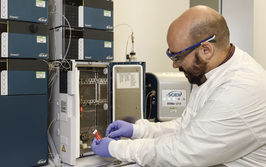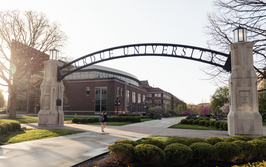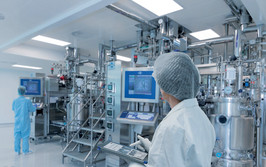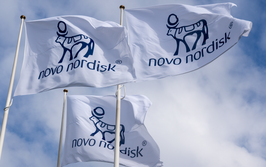From Plastic Pollution to Pharma Compounds
How fungi help turn ocean trash into pharmaceutical platform molecules
Stephanie Vine | | 3 min read | Technology
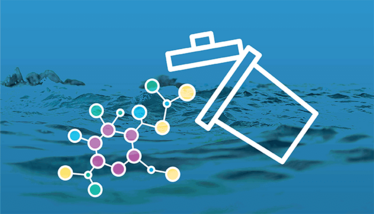
The Great Pacific Garbage Patch is estimated to measure around 1.6 million square kilometers – about three times the size of France – and it consists mainly of plastic.
But one person’s trash is another person’s treasure, and researchers from the University of Kansas and the University of Southern California have devised an approach that uses genetically engineered soil fungus – Aspergillus nidulans – to convert plastic from the patch into more useful compounds (1).
“At this point we’ve reported the conversion of polyethylenes, polystyrene, and mixed, rigid, ocean-sourced plastics to several pharmaceutical platform molecules, including asperbenzaldehyde, citreoviridin, mutilin, and pleuromutilin. We’ve also produced ergothioneine and Af36 spores, the latter used on scale as a biocontrol agent,” says Travis Williams, a professor at the Wrigley Institute of Environmental Studies at the University of Southern California, and one of the authors of the paper describing the approach.
The researchers used oxygen and metal catalysts to digest polyethylenes into carboxylic diacids, which were then fed to the Aspergillus fungi to “upgrade” the diacids into “structurally diverse secondary metabolites.”
Williams says, “My colleague, Clay Wang, and I are both upset about the Great Pacific Garbage Patch. He found insight from literature that suggested some fungal strains might recognize carboxylic diacids as metabolic substrates, and that these might be prepared by oxidative cleavage of polyethylene. He asked me if we could work out a chemical process for the polymer cleavage, which my lab was able to do. With some optimization, we worked out the fungal growth conditions based on oxidatively cleaved polyethylenes. We then started testing out the system on mixed plastics and other polymers and found unexpected success.”
In fact, researchers at the University of Kansas described the approach as “bizarrely efficient.” According to Williams, the team recovered 83 wt% of diacid products from a clean sample of low-density polyethylene (LDPE). “Digest materials from this reaction were converted to asperbenzaldehyde in ca. 40 atom% efficiency. Those numbers are staggering to me, and certainly not all of our experiments are that successful,” he adds. “We designed our approach to be tolerant of real-world plastic waste, but the day we had actual fungi growing on materials that we harvested from the garbage patch was the day I knew we had made an important contribution.”
With any recycling approach, one significant challenge is ensuring it can cope with real-world plastic. The chemistry developed by the researchers can cleave hydrocarbon polymers – as well as ocean tar, which frequently sticks to the samples. Williams explains that these digests are generally well-tolerated by the fungal systems. “We’re still working through controlled experiments to see which are better tolerated than others. Polyethylenes and polystyrenes work well. Nylons, polyesters, polyurethanes, and related materials are degraded, but we don’t know about fungal upgrading yet. We haven’t studied the less-common engineering polymers (ABS, PEEK, PES, and so on). We haven’t studied PVC or PFASs, but we don’t expect them to work. We have applied the chemistry to thermoset epoxies and epoxy composites; it works, but the best products we make do not use biocatalysis.
Williams is hopeful that it will be possible to adapt and scale the process to manage unsorted, unfiltered plastics wastes, such as those found in recycling centers. “I see a great number of hurdles to that goal, but they all seem surmountable to me,” he says. “A question that we struggled with for a long time was what relevance this system would have on global plastics management if the largest volume products that we were making were high value/low volume pharmaceuticals. But we can also make agricultural products, so we may be able to make a dent in global waste management. I think there will be a strong business case to scale this technology to a meaningful size.”
How else do you think this technology could be adapted? Williams is keen to hear your feedback: [email protected]. After all, the potential of genetic technology to produce a broad diversity of products is almost endless…
- C Rabot et al., Angewandte Chemie (2022). DOI: 10.1002/anie.202214609

Making great scientific magazines isn’t just about delivering knowledge and high quality content; it’s also about packaging these in the right words to ensure that someone is truly inspired by a topic. My passion is ensuring that our authors’ expertise is presented as a seamless and enjoyable reading experience, whether in print, in digital or on social media. I’ve spent fourteen years writing and editing features for scientific and manufacturing publications, and in making this content engaging and accessible without sacrificing its scientific integrity. There is nothing better than a magazine with great content that feels great to read.

